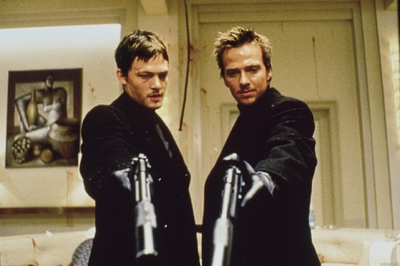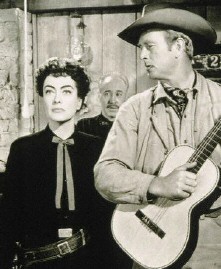 Have you ever watched a movie all the way through, it ends, and you're just confused? The questions run through your head. What happened? Who shot who? Is he alive? Was it good or bad? I'm all for ambigous endings that leaves the finale to the viewer to make up his/her mind about the movie they've just watched. I can put Jean-Pierre Melville's Le Doulos in that category.
Have you ever watched a movie all the way through, it ends, and you're just confused? The questions run through your head. What happened? Who shot who? Is he alive? Was it good or bad? I'm all for ambigous endings that leaves the finale to the viewer to make up his/her mind about the movie they've just watched. I can put Jean-Pierre Melville's Le Doulos in that category.The French master of the cool, suave gangster movie, Melville made a career out of movies about gangsters, hit men, thieves and elaborately planned heists. I haven't loved all of his movies I've seen, but each one had something worth recommending, Le Doulos included. Even not completely understanding what all the twists and turns in the movie were, I can appreciate the style, the cinematography and the two leads.
Fresh out of jail, a thief named Maurice (Serge Reggiani) is looking for revenge. He knocks off one man who's befriended him, supposedly to redeem himself for killing Maurice's girlfriend years before. Stashing a gun, hot jewelry and thousands of dollars in cash, Maurice plans a robbery that is supposed to go smoothly. Of course it doesn't, and Maurice's partner and a police lieutenant are killed in the ensuing shootout. What went wrong? Everything points to Maurice's friend, Silien (Jean Paul Belmondo), who has a reputation all around town as possibly being an informer for the police. Could he have turned in his friend? Maurice is convinced that's what happened and begins to plot more revenge.
There were a ton of twists and turns here with the big reveal coming late in the movie. Through the twists and turns, countless scenes go by but because we don't know what the character's motivation is, it's hard to comprehend what's actually going on. The reveal explains much of what we've seen, but by then I was so confused I felt like I needed to go back and watch the whole thing again.
And now to the positives. One scene in particular jumps out, an 8-minute interrogation scene with Belmondo's Sallien and a police chief. What sets it apart from any other similar scene? It's all done in one take as the camera follows the dialogue and movements of the two characters in a spacious police office. In a time when cuts in a movie aren't even perceptible to the human eye, it's nice to see a scene play out slowly and build up. The same can be said for the opening, one long tracking shot that goes on for almost 4 minutes. Le Doulos' opening made me think of a similar beginning to Melville's Army of Shadows seven years later.
By now, I've learned Melville is not content with a happy ending, and the one here really comes together in the closing minutes, lots of tension and nerves. Much of the tension is built around the relationship between Maurice and Silien, friends in the past but something doesn't feel right. Credit goes to Reggiani and Belmondo for keeping the viewer on edge. Like Maurice, we're not quite sure what's going on.
So overall, it's tough to rate this one. I enjoyed it, I think, but didn't love it. I'd probably have to go back and watch it again to see if it works thanks to the information delivered in the reveal of the actual police informer. Still, I think it's worth recommending, but know what you're getting yourself into. Like Melville's other movies, it is very stylized, very cool, but the plot is extremely difficult to follow. It's probably better to just sit back and try to enjoy the movie and don't overthink it.
Le Doulos (1962): ** 1/2 /****









